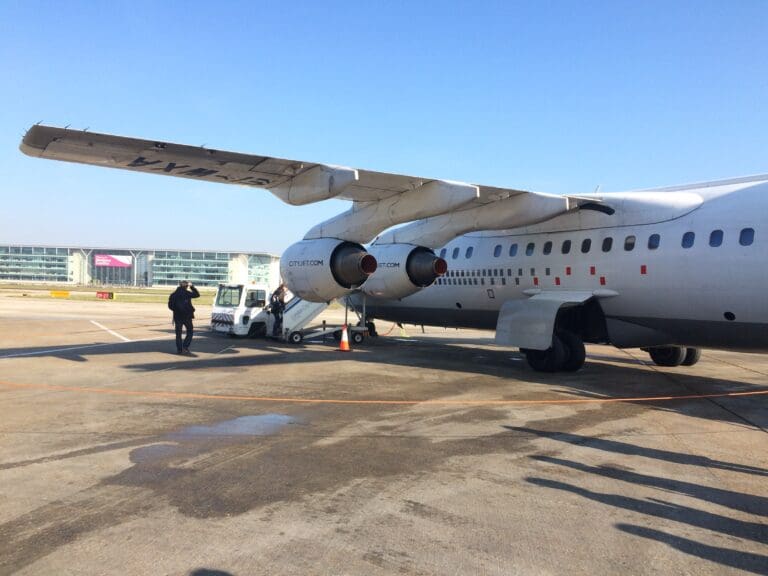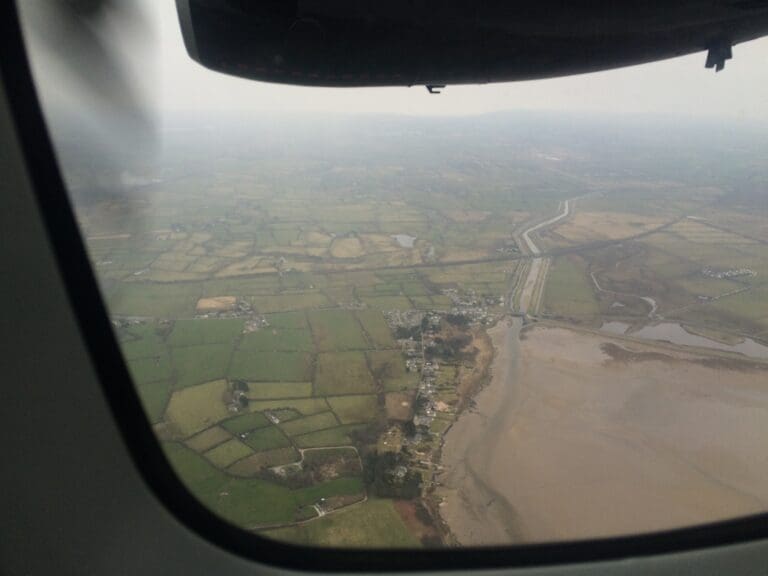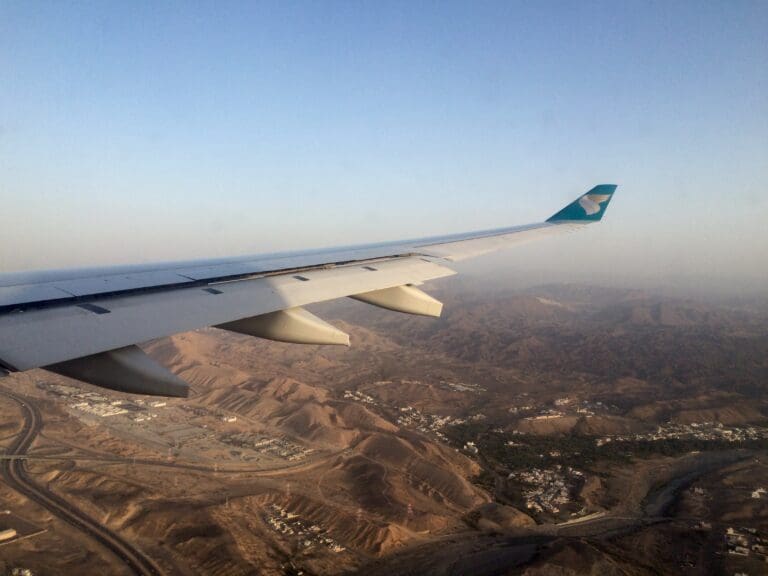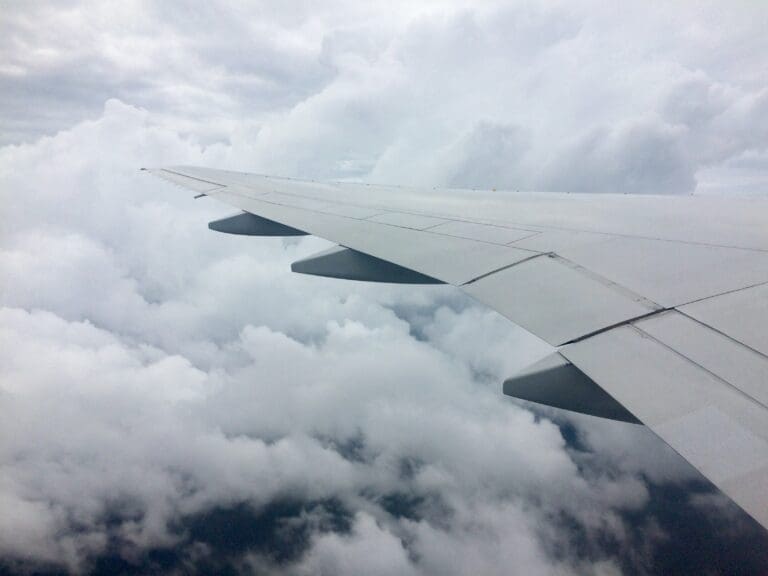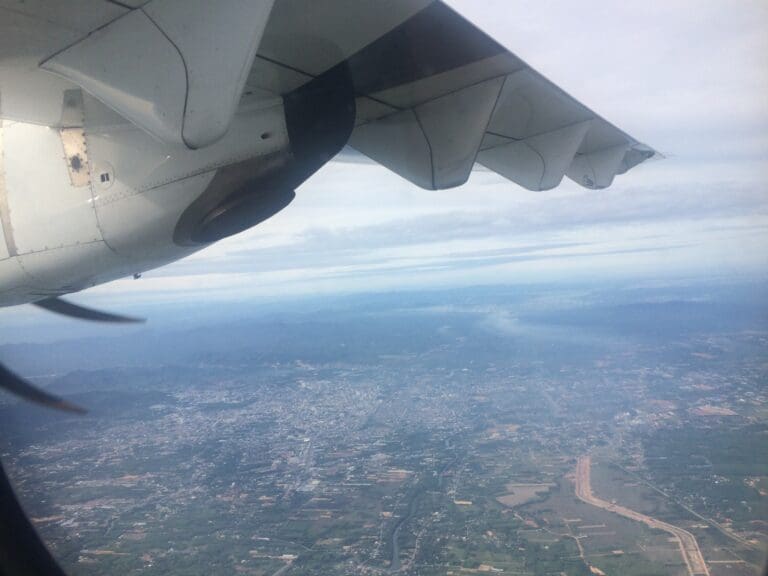Flying the Rare MD-80 in Taiwan: Taipei to Penghu with FAT
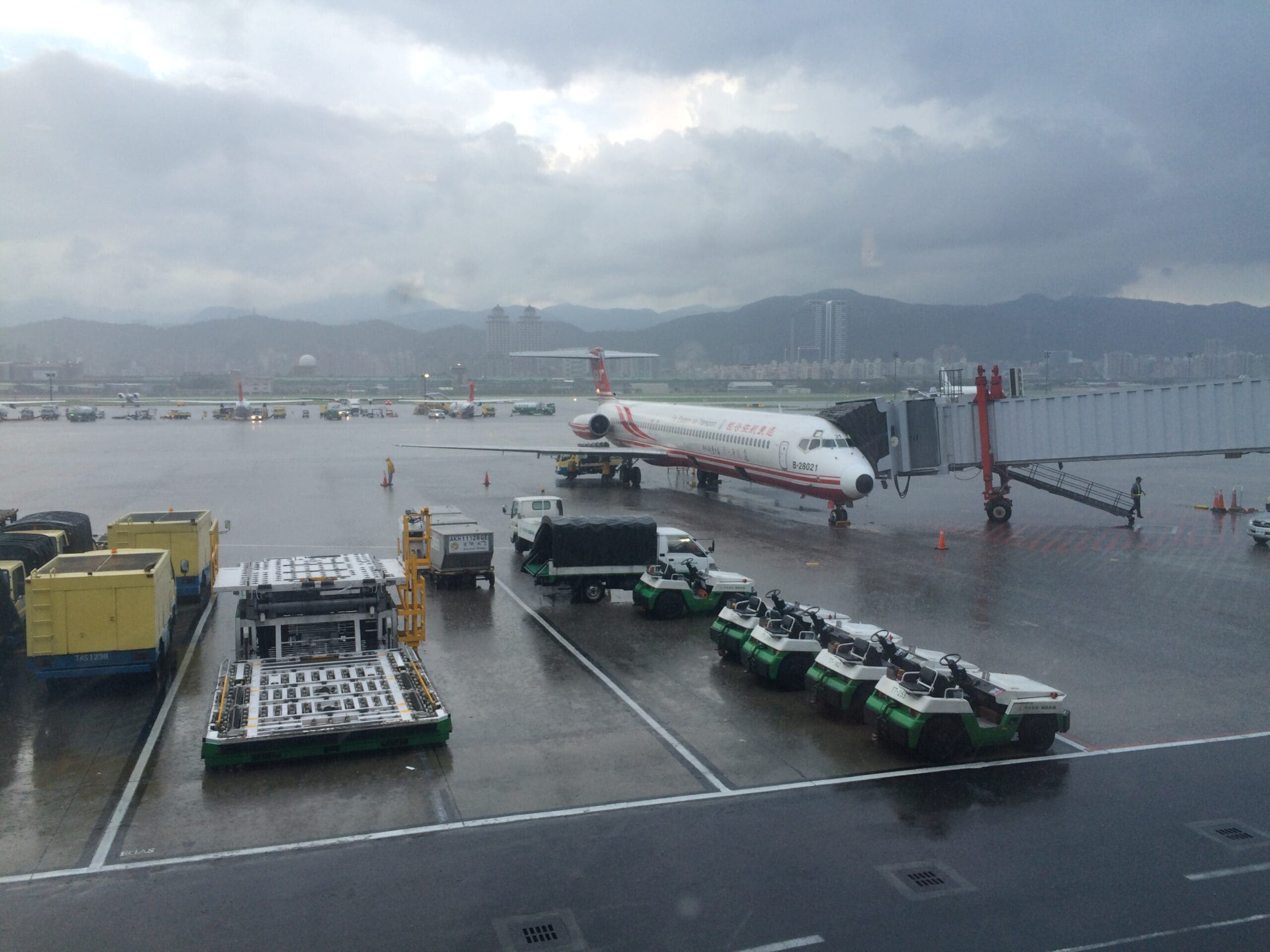
Background
As an aviation enthusiast visiting Taiwan, it was only natural that I attempted to squeeze in a ride on what was the time, one of the easiest McDonnell Douglas MD-80s to fly outside of North America. With these deployed by Far Eastern Air Transport on a number of domestic routes alongside the occasional service to China and Japan. After doing some research, I decided that I would head to the Penghu Islands, flying on FAT’s route from Taipei Songshan to Magong. With the straight line distance between the two being just 159 miles, it would be a very short flight, yet I was still delighted at the opportunity to ride onboard such an increasingly rare aircraft.
With a very limited understanding of Chinese characters, booking via FAT’s website proved to be a challenge and their flights were not bookable via any third party booking site. Enlisting the help of Google Translate, I navigated my way through the airline’s clunky website although in the end booking via this without a Taiwanese phone number ended up being impossible. Whilst a non-enthusiast would have almost certainly given up at this stage and headed over to the comparatively foreigner-friendly website of Mandarin Airlines or UNI Air, determined to catch a ride on the MD-80, I ended up emailing the carrier’s reservation office. In the end, I received a prompt response informing me that my ticket had been reserved and I would have to pay at FAT’s counter at Taipei Songshan Airport.
About the Airline
Far Eastern Air Transport (more commonly known as FAT) can hardly be said to enjoy the same brand awareness as its compatriots China Airlines or EVA Air, especially outside of Taiwan. Indeed, with a domestic focus and flying the occasional ad-hoc flight to the likes of China and Japan, the carrier does not have a particularly expansive footprint in the aviation industry. Thus, some may be surprised to hear that established in 1957, FAT predates both Taiwanese giants and was at one point the largest domestic air carrier on the island.
In its early years, Far Eastern Air Transport depended on piston-engined aircraft such as the Beechcraft C-45 Expeditor, Douglas DC-3 and Douglas DC-6 which operated charter services for passengers and cargo, as well as undertaking a range of other missions. In 1965, the carrier commenced scheduled operations and over the coming years added a range of new turboprops such as the Handley Page Herald and Vickers Viscount, as well as jet airlines such as the Caravelle, Boeing 737-100 and Boeing 737-200. With their domestic scheduled services enjoying success, FAT soon became the largest operator of services within Taiwan and eventually, in 1996, the carrier was granted permission to operate international services which they undertook with their Boeing 737-200, Boeing 757-200 and McDonnell Douglas MD-80 aircraft.
Unfortunately, a combination of factors during the early 2000s hindered FAT’s success and with money running dry, in May 2008 the airline halted its operations intending to reconcile its finances before recommencing operations. Thankfully and perhaps surprisingly, almost three years later the airline took to the skies once more, this time focusing on its domestic route network and with a single-type fleet of McDonnell Douglas MD-80 aircraft. As of summer 2016, FAT operates four MD-82s and four MD-83s, although unfortunately these distinctive aircraft are soon to be replaced by more modern ATR 72s and Boeing 737-800s.
To any non-Chinese speaker wishing to fly in Taiwan, the chances are that unless they are an enthusiast, they will not end up flying with FAT. The reason being this being that their website is only offered in Chinese and when attempting to book with the help of Google Translate I encountered a number of hurdles. Indeed, had I not been determined to fly onboard one of their MD-80s I would have likely given up. In the end, I emailed their ticket reservation office and received a prompt reply with this being reserved and I was advised to pay in person at the airline’s counter at Taipei Songshan Airport.
The Journey
As with all Taiwanese domestic services, my flight to Magung would depart from the smaller Taipei Songshan Airport as opposed to the city’s main international airport, Taipei Taoyuan. With Songshan Airport being far more centrally located than Taoyuan and connected to Taipei’s comprehensive metro network, reaching the airport in time for my evening hop would not prove to be a challenge. Seeing as I needed to check out of my guesthouse by 1200 and being an aviation enthusiast, I could not pass on the opportunity to stop by at the airport’s open air observation deck and thus decided to head to the airport much earlier than required. Following a quick and easy ride on the metro, I arrived at Songshan Airport’s modest terminal complex in around twenty minutes.
Once inside the terminal, I decided to get the administrative formalities out of the way and thus headed over to FAT’s ticket counter. There, a screen above the desk displayed that day’s flights and the number of available seats on these, revealing that it would likely be a fairly quiet ride over to Penghu. Following a quick and easy process, I made payment for my one-way ride to Magung and received a paper ticket. Seeking to rid myself of my bag, I decided that I would try my luck at one of the airline’s check-in counters. Walking up to one of these with no queuing, there, I was served by an incredibly polite and friendly agent who soon printed me off a boarding pass which revealed that I had been assigned seat 1A. Whilst I could not complain about this, being an enthusiast it would have been slightly better to end up further back near the MD-80’s mighty JT8D engines.
After grabbing some food from one of the terminal’s convenience stores, I made my way up to the observation deck and watched as a regular stream of aircraft came and went. After an hour or so, dark clouds filled the sky and began to deposit heavy rain over Taipei. Retreating inside, I made my way to security and following a quick and easy check, I made it to the domestic portion of the terminal building in no more than a couple of minutes.
Wandering around, whilst compact, I found Songshan Airport to be modern and clean, and with an ample number of facilities (although I would still caution passengers against arriving with hours to go until their flight, unless of course they find entertainment in watching the movements outside). That day, my only slight complaint was that there did seem to be a distinct lack of plug sockets throughout the terminal.
As my flight’s scheduled boarding time of 1650 approached, there was no sign of an MD-80 outside and with FAT’s aircraft not appearing on any flight tracking apps, I had no way of knowing where this was or how long the delay that evening would be. However, with rain continuing to lash down and causing all other departures to be delayed for at least an hour, the summer storm was causing a fair amount of disruption that day. Looking at the departure board, these confirmed that the flight to Magung was delayed whilst a couple of announcements rang out regarding this albeit in Mandarin only.

Around ten minutes before my flight’s scheduled departure time, two pilots appeared and a short time later the distinctive pencil like McDonnell Douglas MD-82 pulled in to Stand 9. This took the form of B-28021, which bears the construction number 53167 and line number 2056. As far as MD-80s go, this particular aircraft was one of the newer examples and first took to the skies over California in March 1993, making it a smidgen older than 23 years old at the time of my flight. In April that year, the aircraft was delivered to USAir where it flew for a little over two years as N836AU. Following this short stint, the aircraft was ferried across the Pacific and delivered to Far Eastern Air Transport with whom it has remained with ever since. However, this has not been without interruption as the aircraft was stored in Songshan between 2008 and 2011 during the carrier’s halt of operations.
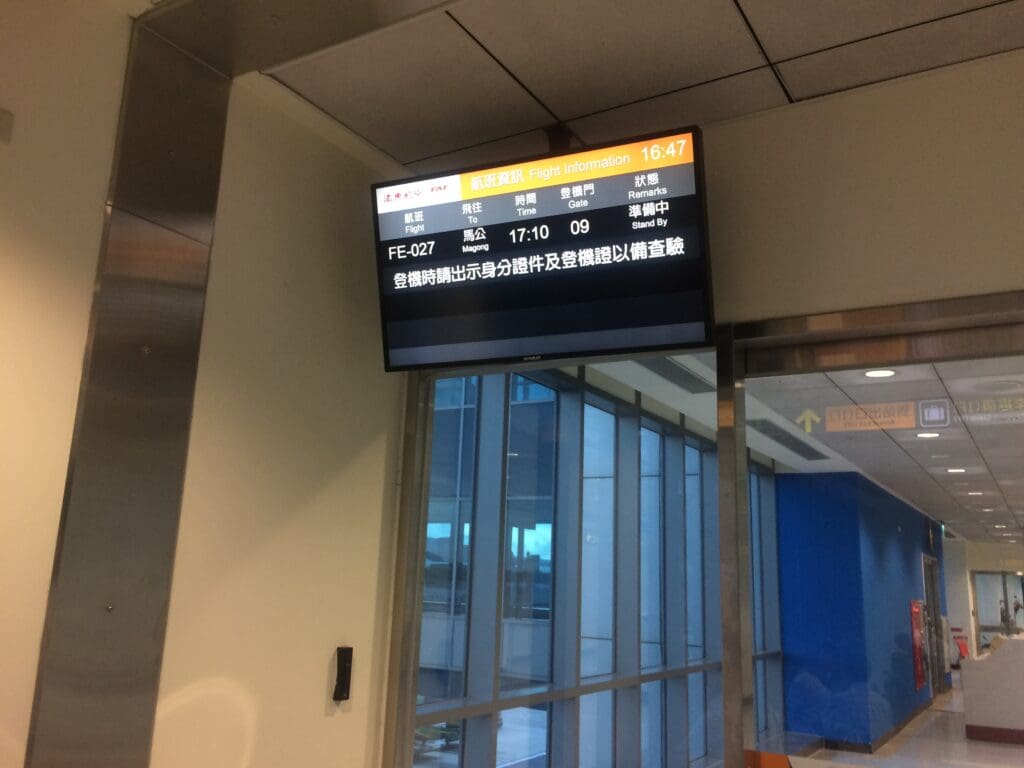
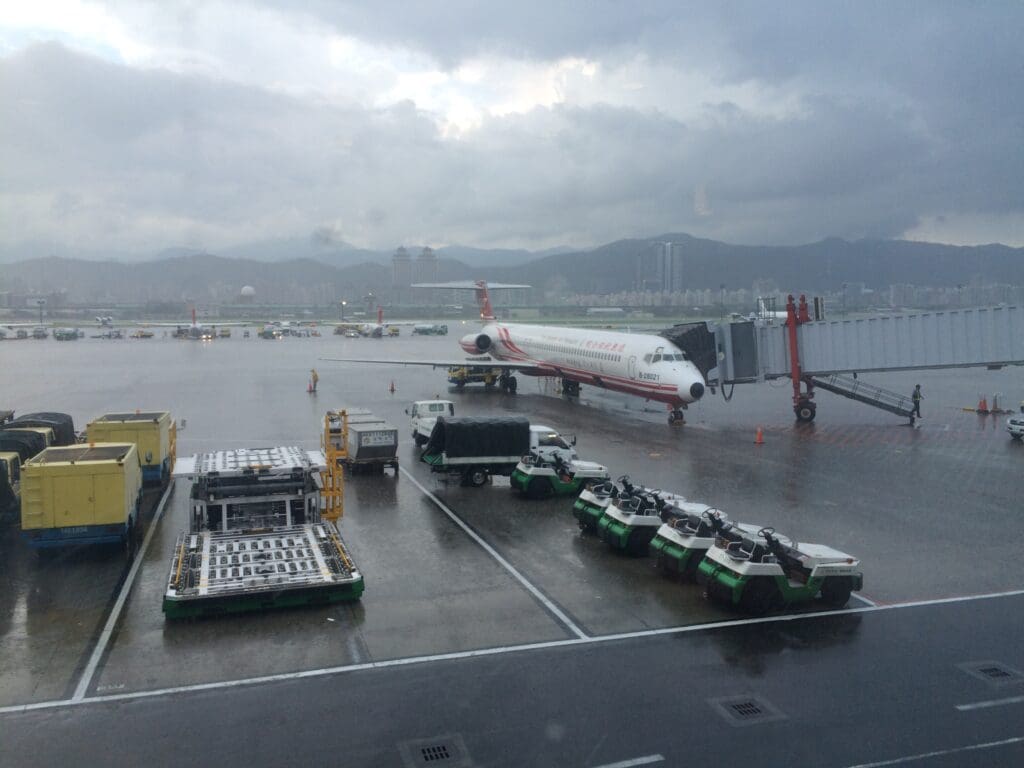
Almost an hour behind schedule, at 1745 an announcement was made in Mandarin only and an orderly line of Penghu passengers formed at the gate. Soon after joining this, I shuffled forwards for a few moments before the gate agent scanned my boarding pass and said some (I assume) pleasantries in Mandarin before I wandered down the jetbridge. Following another short wait, I stepped into the jet bridge where I received a friendly greeting in English from one of the smartly dressed flight attendants before I turned right and voyaged into the 163-seat cabin.
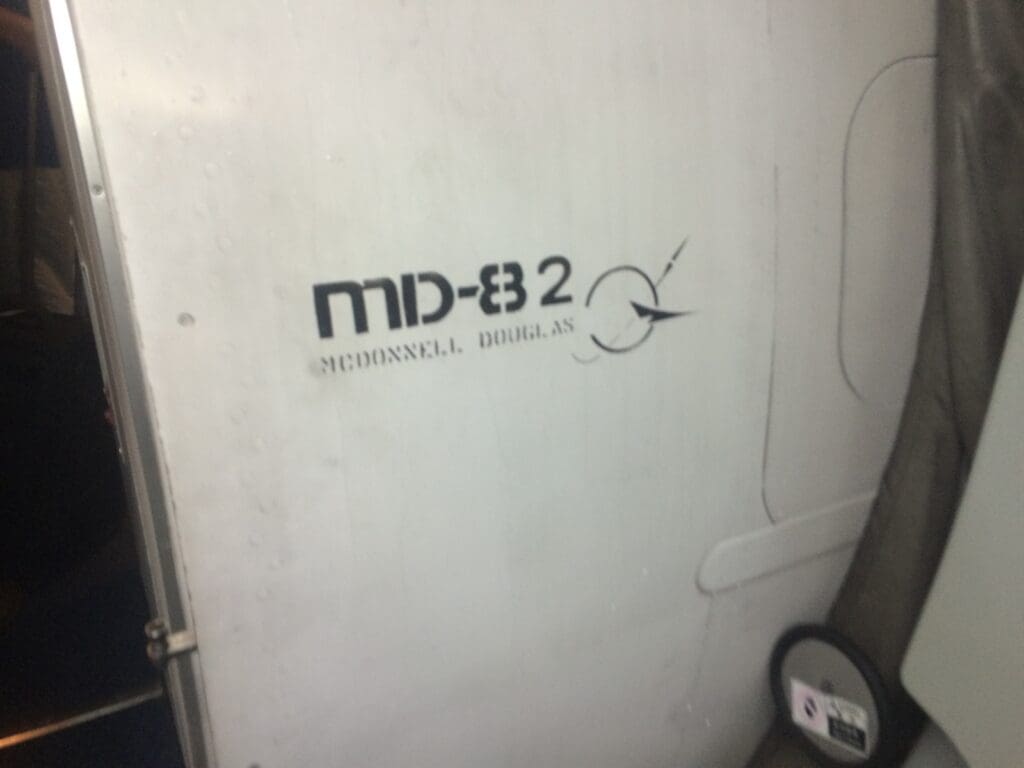
Despite not being the oldest airliner around, the yellowy lighting, tinged plastic panelling, well-padded seats and chunky armrests gave the aircraft a definite retro feel. Although, to me, this added character and was definitely nothing to complain about. Seated in the very first row, I did not have to walk very far before I reached my row and plonked myself down. As expected, the seat was very soft and comfortable, and the amount of legroom was very good (although I was in a bulkhead seat). Furthermore, this was clean and tidy in spite of the short turnaround in Taipei, and was in good condition with relatively few signs of wear and tear throughout.
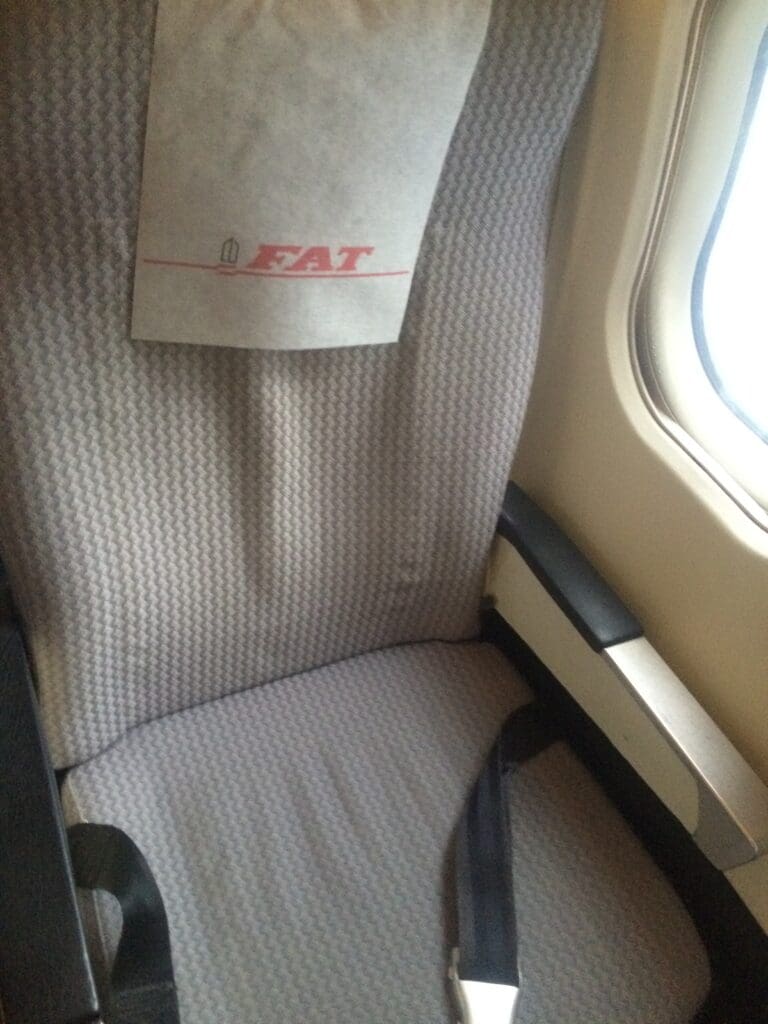
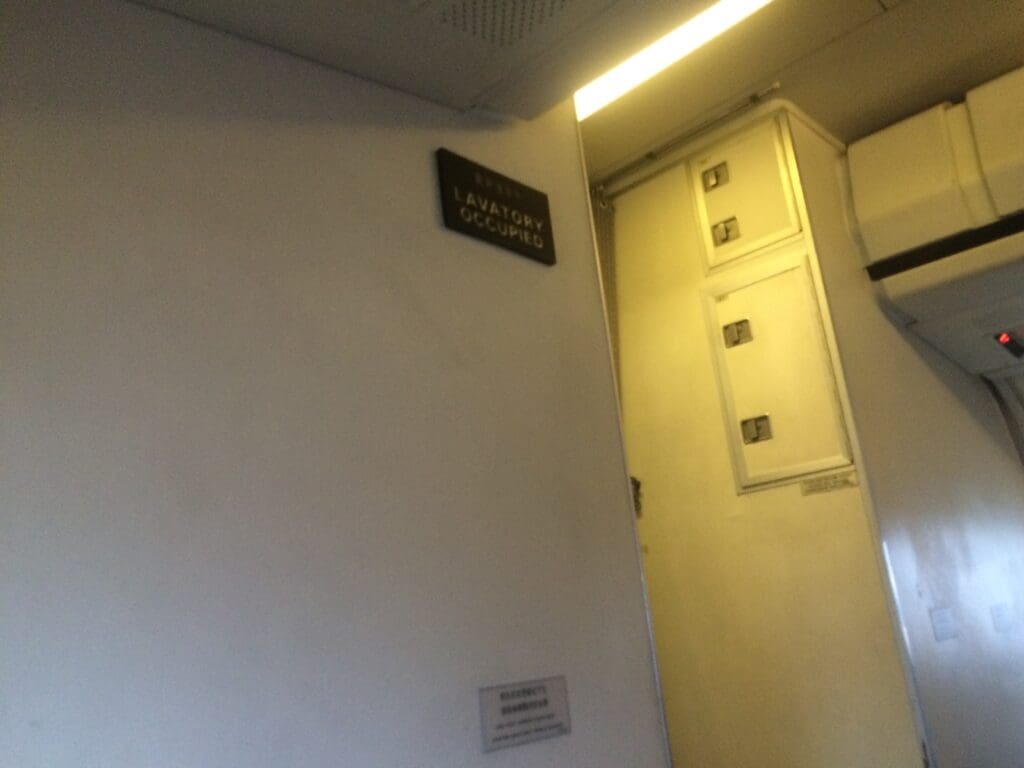

With boarding being an efficient process and thanks to the fact that the jet was far from full, the final passenger boarded no more than ten minutes after boarding had commenced. Likely seeking to minimise the delay, and with an army of ramp staff ready and raring to go, as soon as the final passenger was safely onboard, the cabin door was closed and the jet bridge backed away from the aircraft. At this point, the purser performed a welcome announcement that transitioned into a safety demonstration as the aircraft was pushed back away from its stand. Both were undertaken in Mandarin only, however, as soon as the latter had been completed, one of the flight attendants gave me a quick rundown on the safety information in English.

As the aircraft neared the end of its pushback, the two old JT8D-217C fired up into life although seated at the very front of the aircraft these could barely be heard. Soon, the tug was disconnected from the aircraft and we commenced what seemed to be a slow and cautious taxi to the end of Runway 10. Making our way onto this without holding, the aircraft then came to a stop as the two engines powered up with the brakes held. As soon as these were released, the jet went flying down the runway and travelled a fair distance before we made what seemed to be a steep climb into the thundery skies.
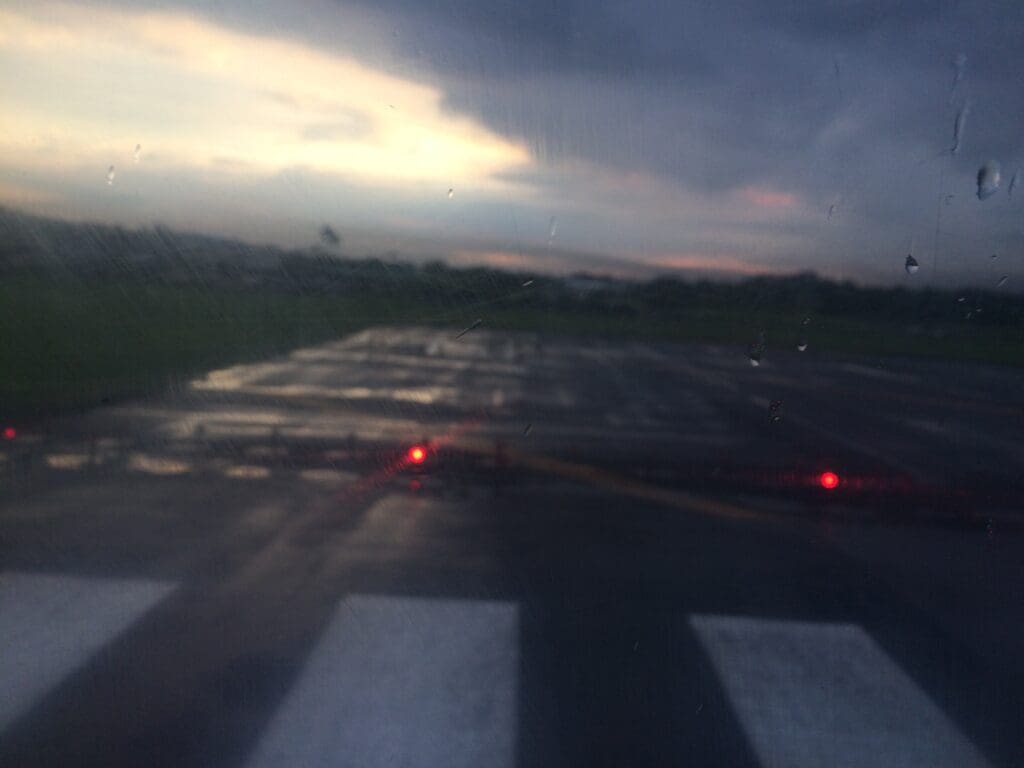
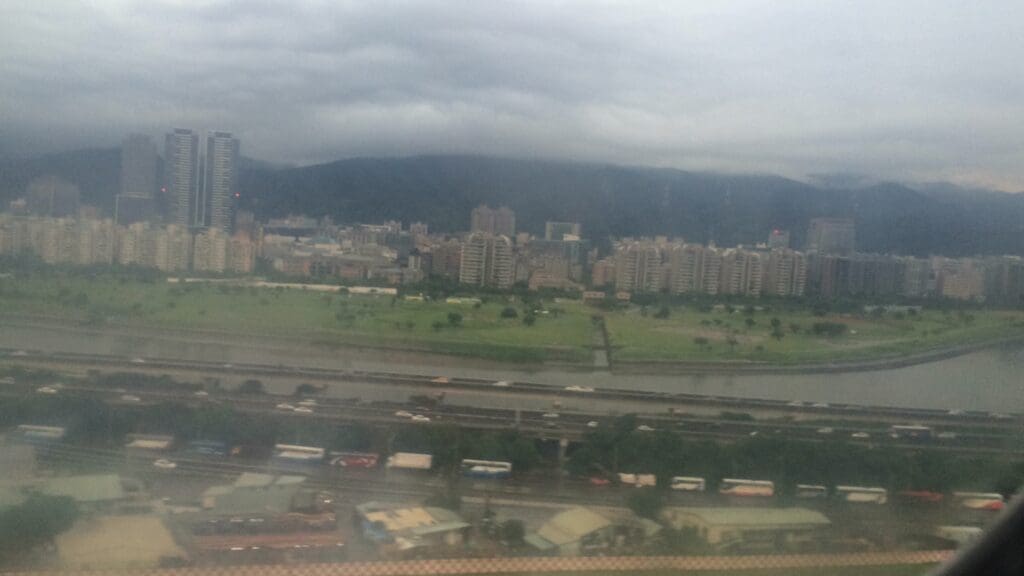
Thanks to the clouds, fairly little of Taipei could be seen as we soon entered the clouds at which point we bumped around a little and turned towards the sea, setting a course that would take us to Penghu. A short time after making it through the clouds, the aircraft levelled off at its low cruising altitude of just 16,000 feet and soon I was treated to picturesque dusk scenes as we sped southwestwards.
Despite the very short flight time, passengers were to be treated to a round of complimentary service. As soon as we had levelled off, the crew took to the aisles and I was handed a wet-wipe, a paper cup containing warm tea and a packet of sweet wafers. Given the flight time, I had most definitely not expected any of this and so this was a nice and unexpected touch.
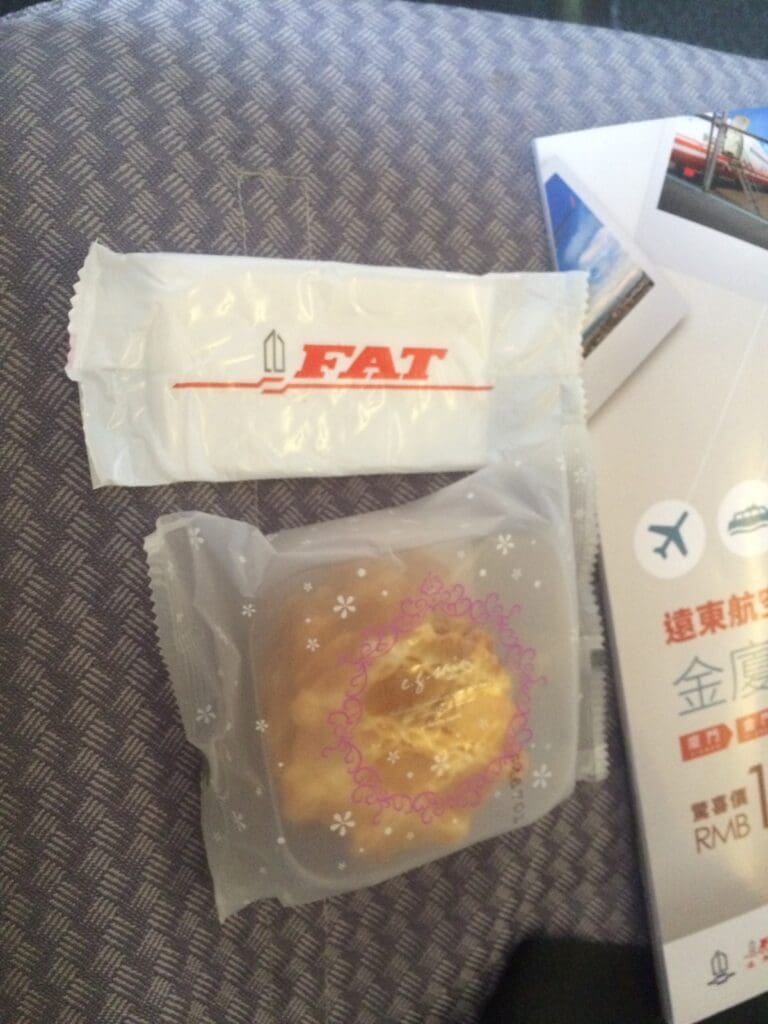
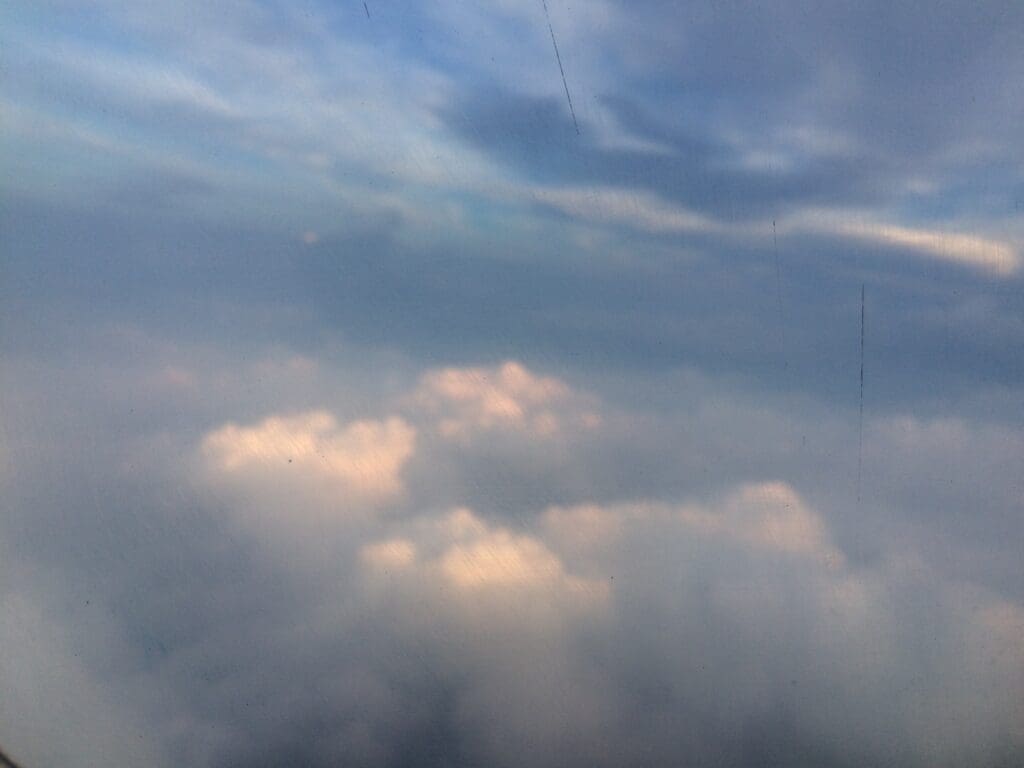
No sooner than after a few minutes at our cruising altitude, the aircraft commenced its descent and I soon spotted a UNI Air ATR 72 that was also bound for Penghu, which we overtook as we neared the islands. As we sank lower and lower, little could be seen other than the dark waters below until the very final stages of our ride when the island’s shorelines appeared as we floated down over this before returning to earth with a gentle touchdown.
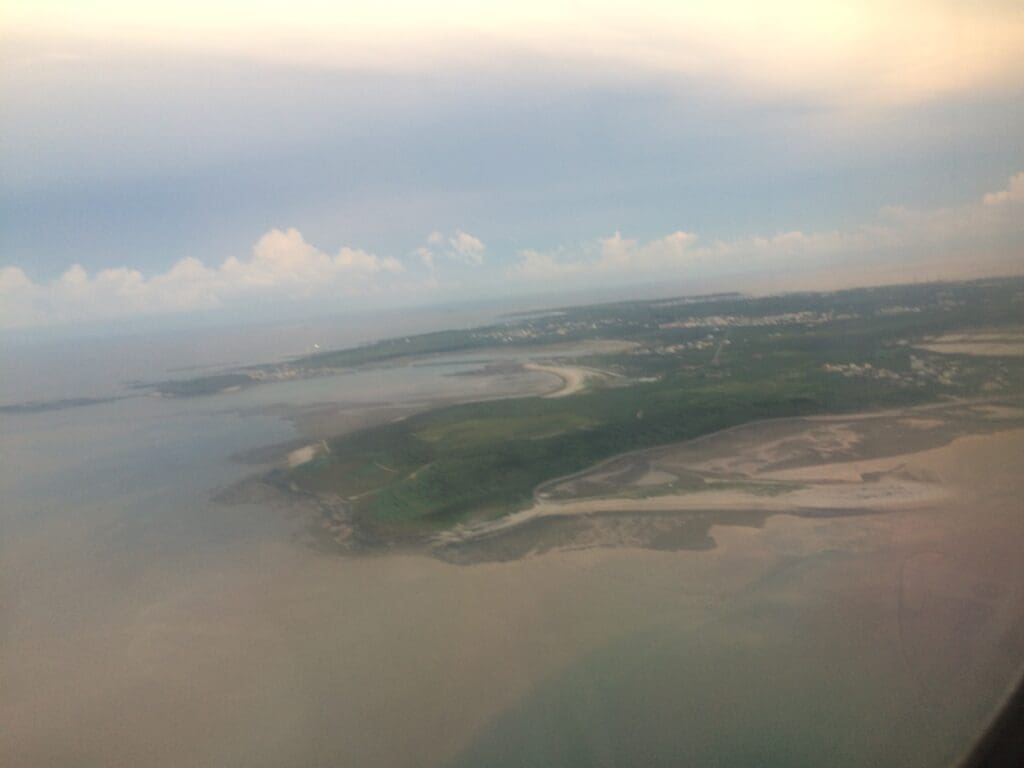
Once back on the ground, the aircraft decelerated rather sharply before commencing a short taxi over to the small terminal building where we came to a halt at Stand 4. Once the engines spooled down, the cabin door was soon opened and disembarkation commenced. Thus bringing an end to my first and only ride with FAT.
The Return Journey
Whilst it would have been good to catch another ride on an MD-80 on the return journey to Taipei, this would have meant either cutting short my day cycling around the island or staying another night which was not possible thanks to my tight schedule. Thus, I was left with two options – Mandarin Airlines and their Embraer 195s, or UNI Air and their ATR 72s. With no particular preference, I simply went for the cheapest option which aligned with my schedule and soon booked a seat on Mandarin Airlines’ 2010 service back to Taipei Songshan.
Following a pleasant day of cycling, I arrived back at the guesthouse for a shower and a final pack of my things before heading to the airport. Whilst there is a bus service that runs from Makung to the airport, with it being peak summer, travelling with heavy bags and already exhausted from my day of cycling in the summer heat, I decided to take a taxi to the airport instead. Once the warm and friendly guesthouse owner called their ‘friend’ a taxi appeared within minutes and I soon found myself in the backseat of a slightly retro but comfortable and clean car speeding through the island’s quiet streets amid an evening thunderstorm.
Making it to the airport in no more than ten minutes, I paid my fare before hopping out and entering the small terminal building. With evening flights to destinations across Taiwan, at that time this was rather busy and a fair number of queues could be seen at many of the terminal’s check-in desks. Looking around, this seemed to be a little more dated in its appearance when compared to the likes of Taipei Songshan, however, it was very clean, tidy and functional thus leaving me with nothing to complain about. Furthermore, despite its small size, the terminal is home to a fair number of cafés and shops. Wandering over to Mandarin Airlines’ check-in counters, once there I handed over my passport and bag to the very friendly ground agent who soon printed me off a boarding pass and tagged my bag before I was free to head onwards to security.
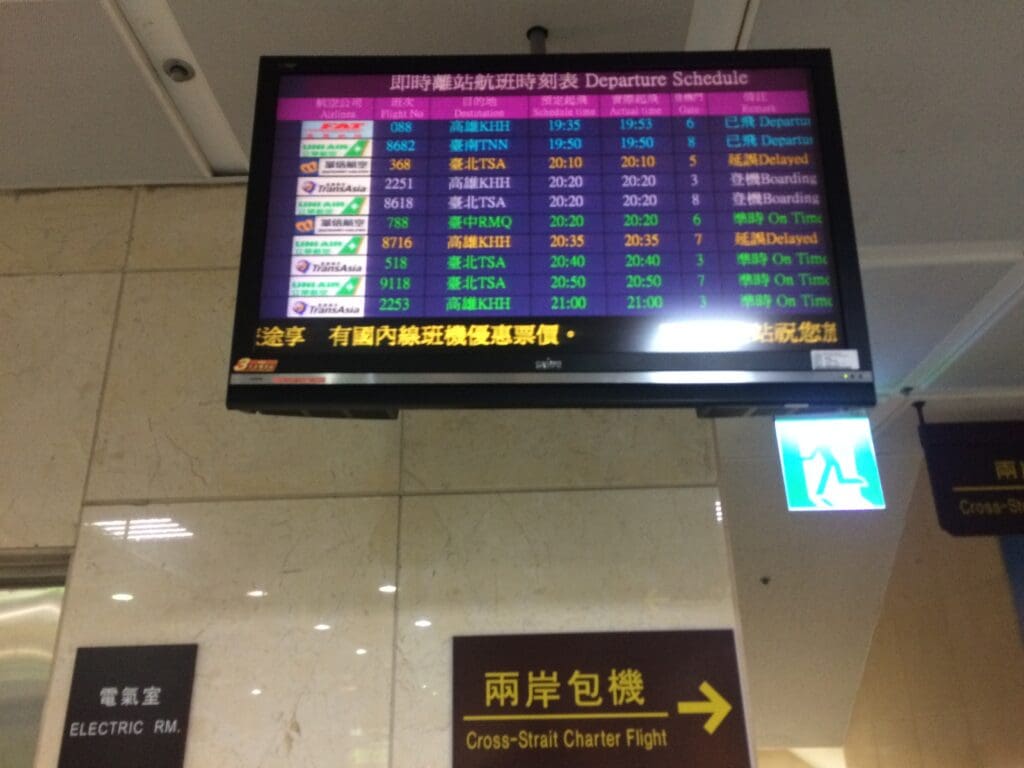
Wending my way upstairs, I reached the small security area and was able to pass through this with minimal fuss thanks to the efficient yet friendly staff members manning this that evening. As expected, the airside portion of the terminal was compact although clean and tidy, with views provided of the apron outside. Once there, I plugged my phone in and made use of the fast complimentary wifi as I waited for my ride back to Taipei.
As my flight’s scheduled departure time neared, it became obvious that something was awry. At that time, a crowd of rather disgruntled passengers could be seen lingering around the gate as several announcements rang out in Mandarin. Looking outside, a Transasia ATR 72 could be seen standing where the Mandarin Airlines Embraer should have been. Had there been a gate change? Or had our flight been delayed? Several minutes later a Mandarin Airlines staff member appeared and shouted a few words in Mandarin. Not understanding what they had said, at this time, I approached the agent who took my boarding pass and scribbled out the gate number, before realising their mistake and scribbling out my original gate number! As it turned out, there were two Mandarin Airlines flights bound for Taipei Songshan and both had been assigned to the same gate, with the staff member informing those waiting at the wrong gate to head to another.
Eventually, the ATR 72 that had been standing outside buzzed off into the night skies and was soon replaced by the sleek Embraer 190 that would be flying me over to Taipei. Soon, at 2130 an announcement was made in Mandarin and a long orderly line of passengers formed leading up to the gate podium. With this soon beginning to budge, I made my way down the jetbridge and soon found myself joining another queue as I waited at the cabin door.
That evening, Embraer 190AR B-16822 would be operating the service back to the Taiwanese capital. Manufactured at Embraer’s plant on the other side of the world in the Brazilian city of São José dos Campos, this took to the skies in early 2007 with the test registration of PT-SNK and was thus over nine years old at the time of my flight. In June 2007, the aircraft was flown across the Pacific, making plenty of stops before arriving at its new home in Taiwan where it entered service with Mandarin Airlines.
As I stepped into the small forward galley, I received a warm and friendly greeting in English before turning right and voyaging down into the Embraer’s 104-seat cabin. Inside, each seat came in the form of Embraer’s classic seat which was covered in a grey faux leather cover which featured disposable antimacassars which featured advertisements for the Taiwanese manufacturing company, Accutex. Looking around, the cabin appeared to be smart, spotlessly clean and with very little sign of wear and tear, thus leaving me with no complaints. Once seated, I found the seat to be comfortable and spacious, and I would have had no issue flying onboard this Embraer on a much longer sector. That evening, passengers sped onto the aircraft and boarding came to an end in no more than eight minutes. Looking around, the flight was fairly busy and I would have estimated the load to have been approximately 80%, although I lucked out and ended up with an empty neighbouring seat.
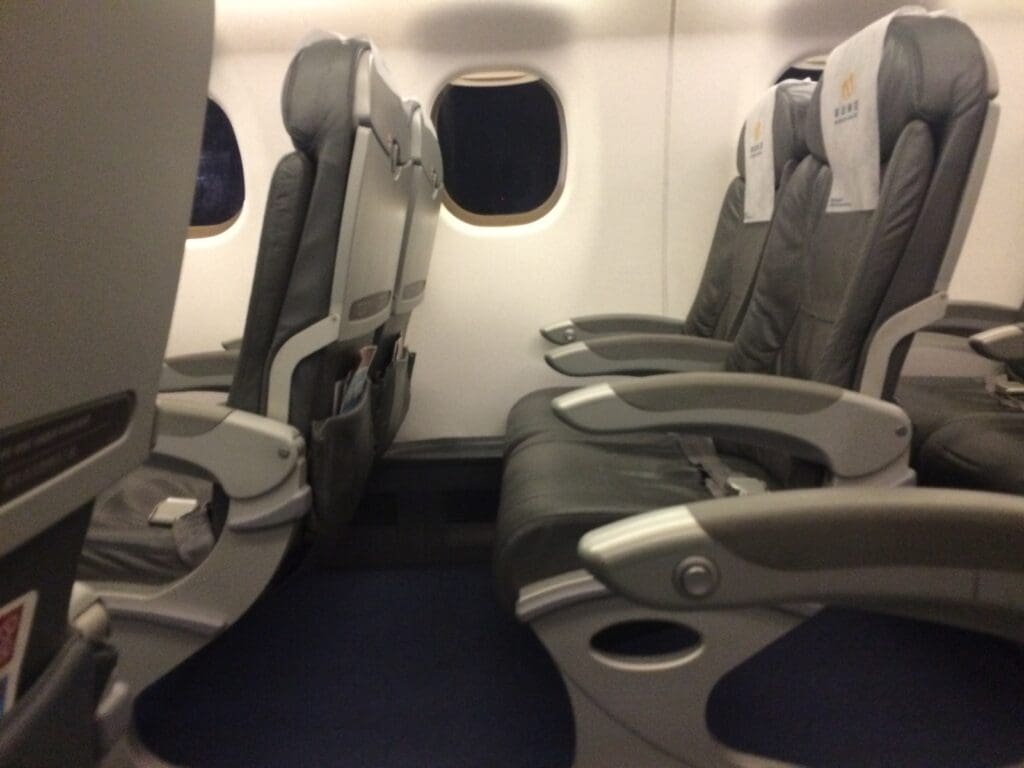
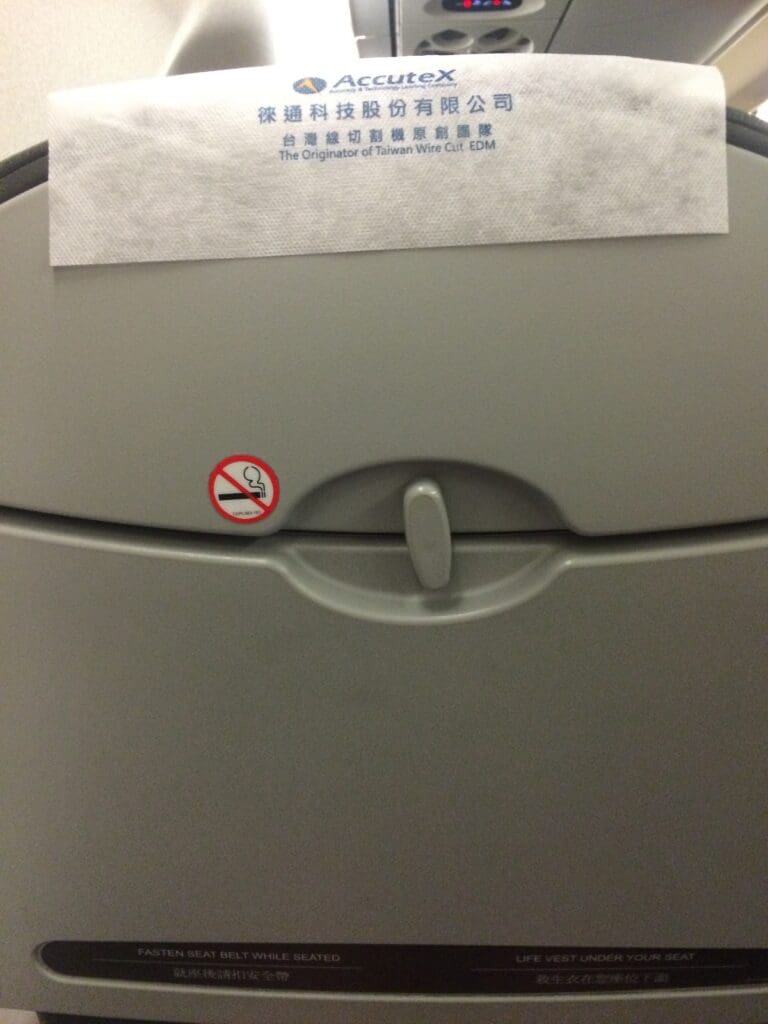
At 2143, the Embraer jolted backwards and the two engines spooled into life whilst inside the cabin a welcome announcement was performed in Mandarin and English followed by a short safety demonstration. Once the cabin lights had been dimmed, the occasional flash of lightning illuminated the cabin as we made our way to the runway and highlighted the looks of terror on some of my fellow passengers’ faces.
With no other traffic around, we made it to the runway without holding and soon the two engines powered up and we went flying down the runway before shooting upwards into the night skies like a rocket. Once in the air, it wasn’t long before the Embraer was thrown about a little as it passed through the storm clouds around Penghu.
Once again, the aircraft maintained a fairly low cruising altitude thanks to the short distance between Penghu and Taipei. As we neared our cruising altitude, an announcement was made with the usual request for passengers to keep their seatbelts fastened whilst seated before moving on to go through the drink options on that evening’s service. A short time later, the crew took to the aisles and commenced the service from both the front and rear of the aircraft, working in an efficient and friendly manner.
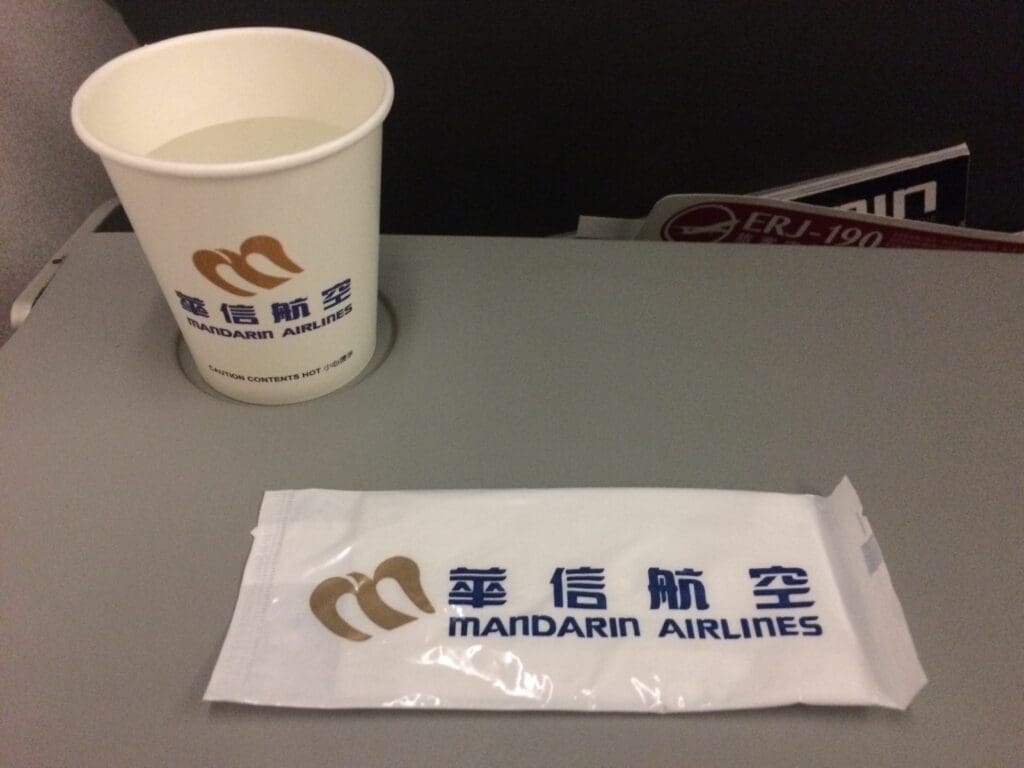
Before I knew it, the captain’s voice filled the cabin as they announced our imminent start to the descent, apologised for the delay and thanked passengers in Mandarin and English. True to their word, soon enough the crew passed through the cabin collecting rubbish and we began our short and bumpy descent back down to earth.
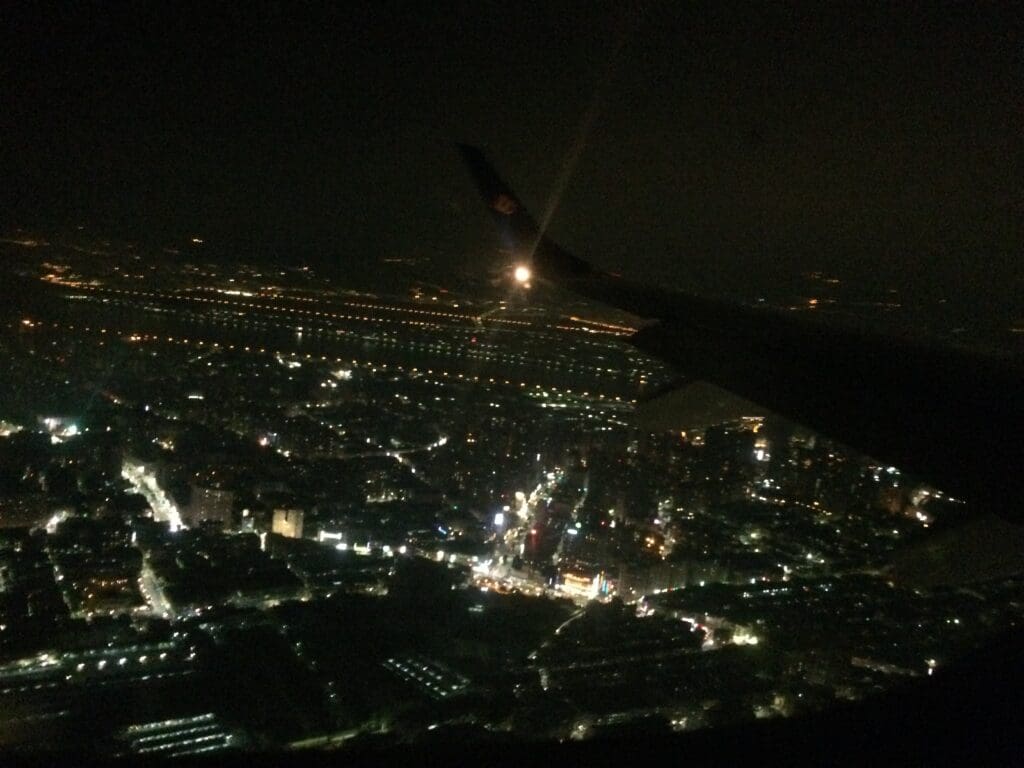
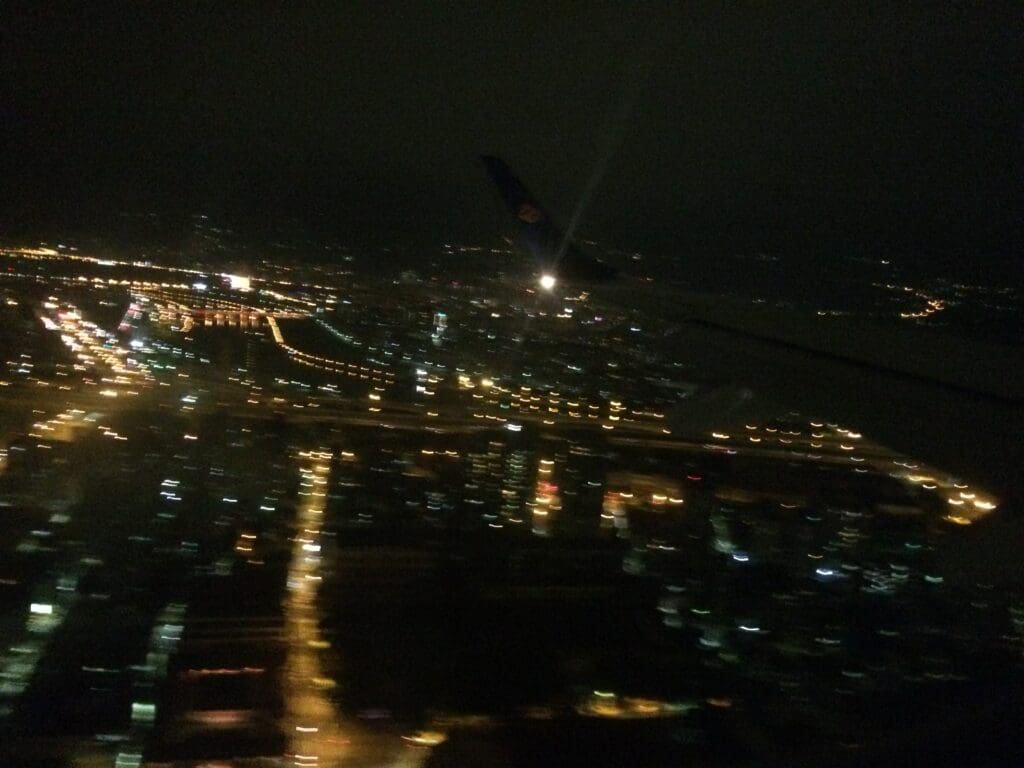
Thanks to the low-lying clouds that evening, unfortunately, very little of Taiwan could be seen as we approached Taipei and we ended up breaking through these just moments before reaching our destination. Below, the bright lights around Songshan Airport whizzed past before me made a soft touchdown on Runway 10 at 2227. Once on the ground, the aircraft braked heavily before vacating the runway at which point the cabin crew performed the usual post-arrival announcement. With many aircraft having parked up for the night, the terminal’s stands were rather full and we thus ended up at a remote stand. Fortunately, with a bus already seen waiting to head off to the terminal and an army of staff there, once we came to a halt, disembarkation soon commenced and it wasn’t long before I found myself speeding towards the terminal.


